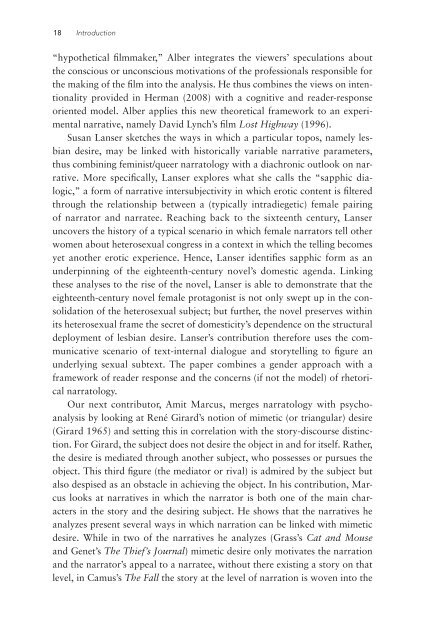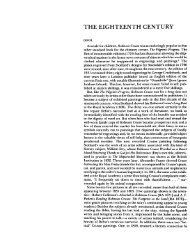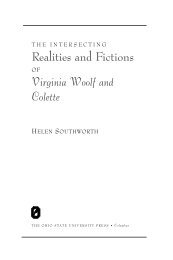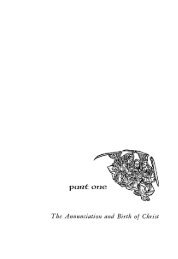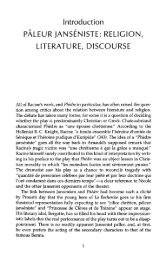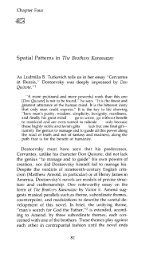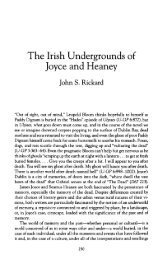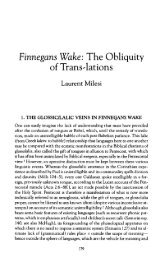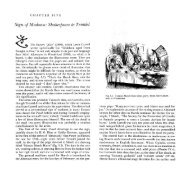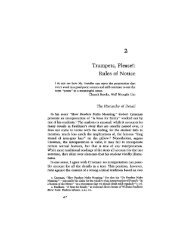Postclassical Narratology: Approaches and Analyses
Postclassical Narratology: Approaches and Analyses
Postclassical Narratology: Approaches and Analyses
Create successful ePaper yourself
Turn your PDF publications into a flip-book with our unique Google optimized e-Paper software.
18 Introduction<br />
“hypothetical filmmaker,” Alber integrates the viewers’ speculations about<br />
the conscious or unconscious motivations of the professionals responsible for<br />
the making of the film into the analysis. He thus combines the views on intentionality<br />
provided in Herman (2008) with a cognitive <strong>and</strong> reader-response<br />
oriented model. Alber applies this new theoretical framework to an experimental<br />
narrative, namely David Lynch’s film Lost Highway (1996).<br />
Susan Lanser sketches the ways in which a particular topos, namely lesbian<br />
desire, may be linked with historically variable narrative parameters,<br />
thus combining feminist/queer narratology with a diachronic outlook on narrative.<br />
More specifically, Lanser explores what she calls the “sapphic dialogic,”<br />
a form of narrative intersubjectivity in which erotic content is filtered<br />
through the relationship between a (typically intradiegetic) female pairing<br />
of narrator <strong>and</strong> narratee. Reaching back to the sixteenth century, Lanser<br />
uncovers the history of a typical scenario in which female narrators tell other<br />
women about heterosexual congress in a context in which the telling becomes<br />
yet another erotic experience. Hence, Lanser identifies sapphic form as an<br />
underpinning of the eighteenth-century novel’s domestic agenda. Linking<br />
these analyses to the rise of the novel, Lanser is able to demonstrate that the<br />
eighteenth-century novel female protagonist is not only swept up in the consolidation<br />
of the heterosexual subject; but further, the novel preserves within<br />
its heterosexual frame the secret of domesticity’s dependence on the structural<br />
deployment of lesbian desire. Lanser’s contribution therefore uses the communicative<br />
scenario of text-internal dialogue <strong>and</strong> storytelling to figure an<br />
underlying sexual subtext. The paper combines a gender approach with a<br />
framework of reader response <strong>and</strong> the concerns (if not the model) of rhetorical<br />
narratology.<br />
Our next contributor, Amit Marcus, merges narratology with psychoanalysis<br />
by looking at René Girard’s notion of mimetic (or triangular) desire<br />
(Girard 1965) <strong>and</strong> setting this in correlation with the story-discourse distinction.<br />
For Girard, the subject does not desire the object in <strong>and</strong> for itself. Rather,<br />
the desire is mediated through another subject, who possesses or pursues the<br />
object. This third figure (the mediator or rival) is admired by the subject but<br />
also despised as an obstacle in achieving the object. In his contribution, Marcus<br />
looks at narratives in which the narrator is both one of the main characters<br />
in the story <strong>and</strong> the desiring subject. He shows that the narratives he<br />
analyzes present several ways in which narration can be linked with mimetic<br />
desire. While in two of the narratives he analyzes (Grass’s Cat <strong>and</strong> Mouse<br />
<strong>and</strong> Genet’s The Thief’s Journal) mimetic desire only motivates the narration<br />
<strong>and</strong> the narrator’s appeal to a narratee, without there existing a story on that<br />
level, in Camus’s The Fall the story at the level of narration is woven into the


